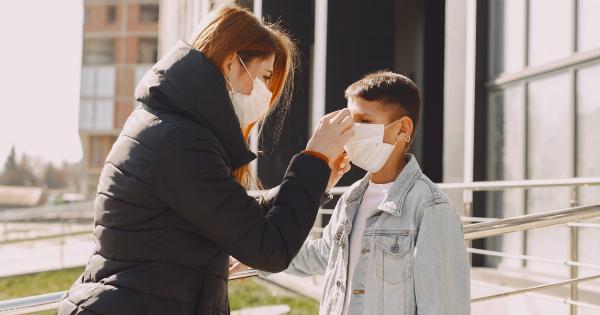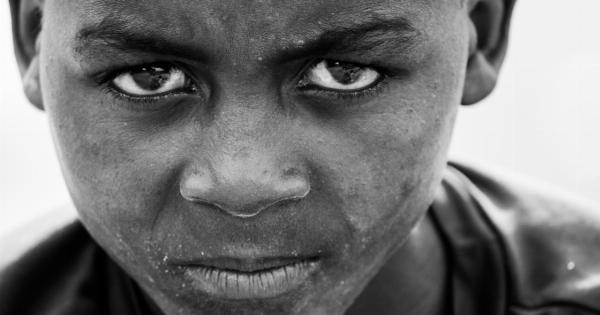Fifth disease, also known as erythema infectiosum or slapped cheek syndrome, is a viral illness that primarily affects children. It is caused by parvovirus B19, a common and highly contagious virus.
The characteristic symptom of fifth disease is a distinctive rash on the face, which gives the syndrome its nickname of “slapped cheek syndrome.”.
Mode of Transmission
Parvovirus B19 is spread from person to person through respiratory droplets, such as those produced by coughing or sneezing.
It can also be transmitted through contact with infected blood or blood products, although this mode of transmission is less common. The virus can be contagious even before symptoms appear, which makes it challenging to prevent its spread.
Signs and Symptoms
Fifth disease typically starts with nonspecific symptoms similar to those of a common cold, including mild fever, headache, runny nose, and sore throat. These initial symptoms may be followed by a distinctive rash, which is the hallmark of the illness.
The rash usually begins on the cheeks, giving a characteristic “slapped cheek” appearance. After a few days, the rash may spread to other parts of the body, including the trunk, arms, and legs.
In addition to the rash, some children may experience joint pain and swelling, particularly in the hands, wrists, knees, and ankles. These symptoms are more common in older children and adults and can sometimes linger for several weeks or months.
Diagnosis
A healthcare professional can usually diagnose fifth disease based on the characteristic rash and history of symptoms.
In some cases, blood tests may be conducted to confirm the presence of parvovirus B19 antibodies or to measure the level of the virus in the blood. However, such tests are not necessary in most cases, as the virus typically resolves on its own without complications.
Treatment and Management
There is no specific antiviral treatment for fifth disease as it is usually a mild illness that resolves on its own. Symptomatic relief can be provided through over-the-counter pain relievers to alleviate fever and joint pain.
It is also recommended to maintain hydration and get plenty of rest. In most cases, children can return to school or daycare once the rash appears since the contagious period is usually over by that time.
However, it is important to note that certain individuals, such as pregnant women or individuals with compromised immune systems, may be at a higher risk of complications from parvovirus B19 infection.
In such cases, seeking medical attention is crucial for appropriate management and to minimize potential risks.
Impact on Children
Fifth disease is most common in children aged between 5 and 15 years, although it can affect people of all ages. In otherwise healthy children, fifth disease is generally a mild illness, and the symptoms resolve without long-term consequences.
However, there are a few factors related to fifth disease that can have a notable impact on children:.
1. Missed School Days
Since fifth disease is contagious before the onset of the rash, some children may need to stay home from school or daycare until the rash appears. This can lead to missed school days and can disrupt academic schedules.
2. Discomfort and Joint Pain
Although joint pain and swelling are more common in older children and adults, they can be particularly uncomfortable for affected individuals. Joint pain can limit a child’s activities and temporarily affect their mobility.
3. Emotional Impact
Children with visible rashes on their faces may experience embarrassment or insecurity about their appearance, especially during the rash’s most prominent phase. This can have a temporary emotional impact on their well-being and self-esteem.
Prevention
Preventing the spread of fifth disease primarily involves practicing good hygiene and taking precautions when interacting with individuals who are known to be infected. Some preventive measures include:.
1. Hand hygiene
Regularly washing hands with soap and water or using an alcohol-based hand sanitizer can help reduce the risk of spreading the virus.
2. Respiratory etiquette
Encouraging children to cover their nose and mouth while coughing or sneezing, preferably with a tissue or their elbow, can minimize the release of respiratory droplets containing the virus.
3. Avoidance of close contact
It is advisable to avoid close contact with individuals known or suspected to have fifth disease, especially during the contagious period.
Conclusion
Fifth disease is a common viral illness that primarily affects children. While generally mild and self-limiting, it can cause discomfort and temporarily impact a child’s daily life.
By understanding the signs, symptoms, and transmission of fifth disease, as well as implementing preventive measures, parents and caregivers can help minimize its impact on children.



























